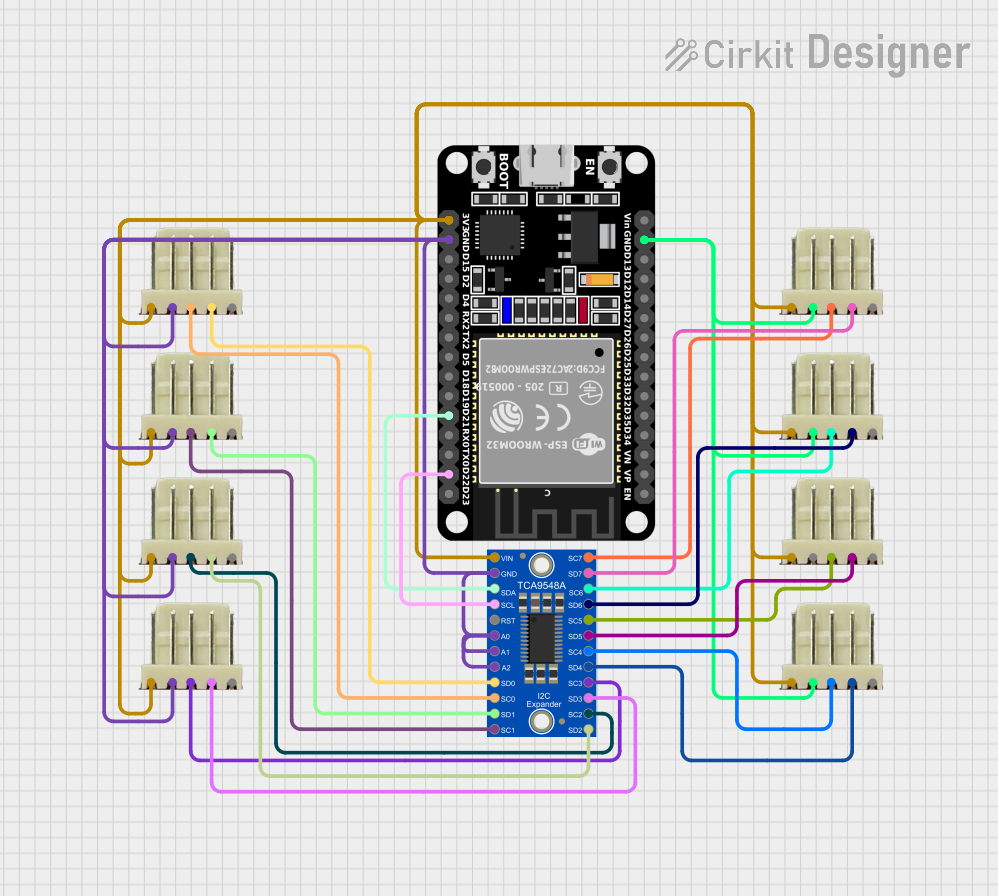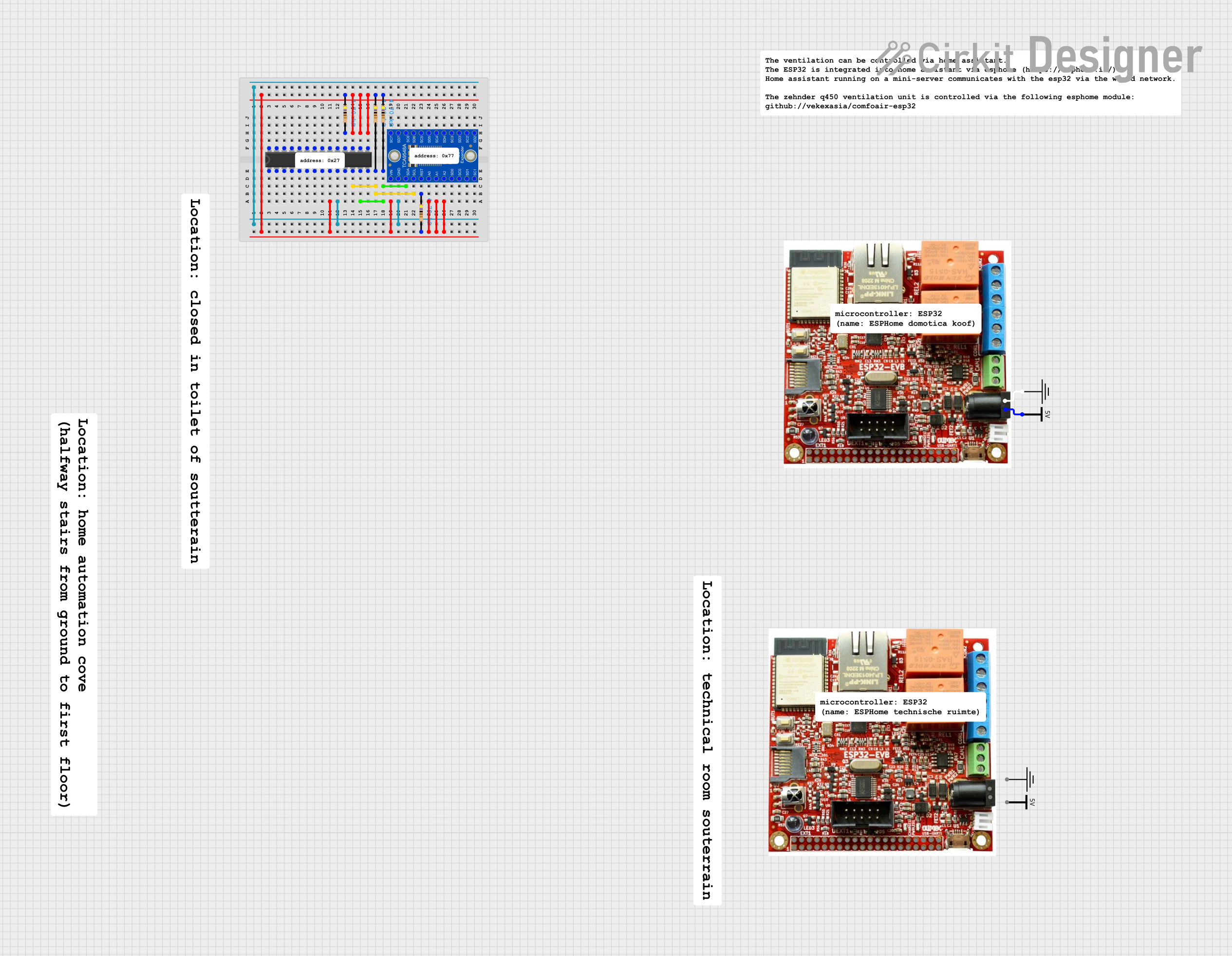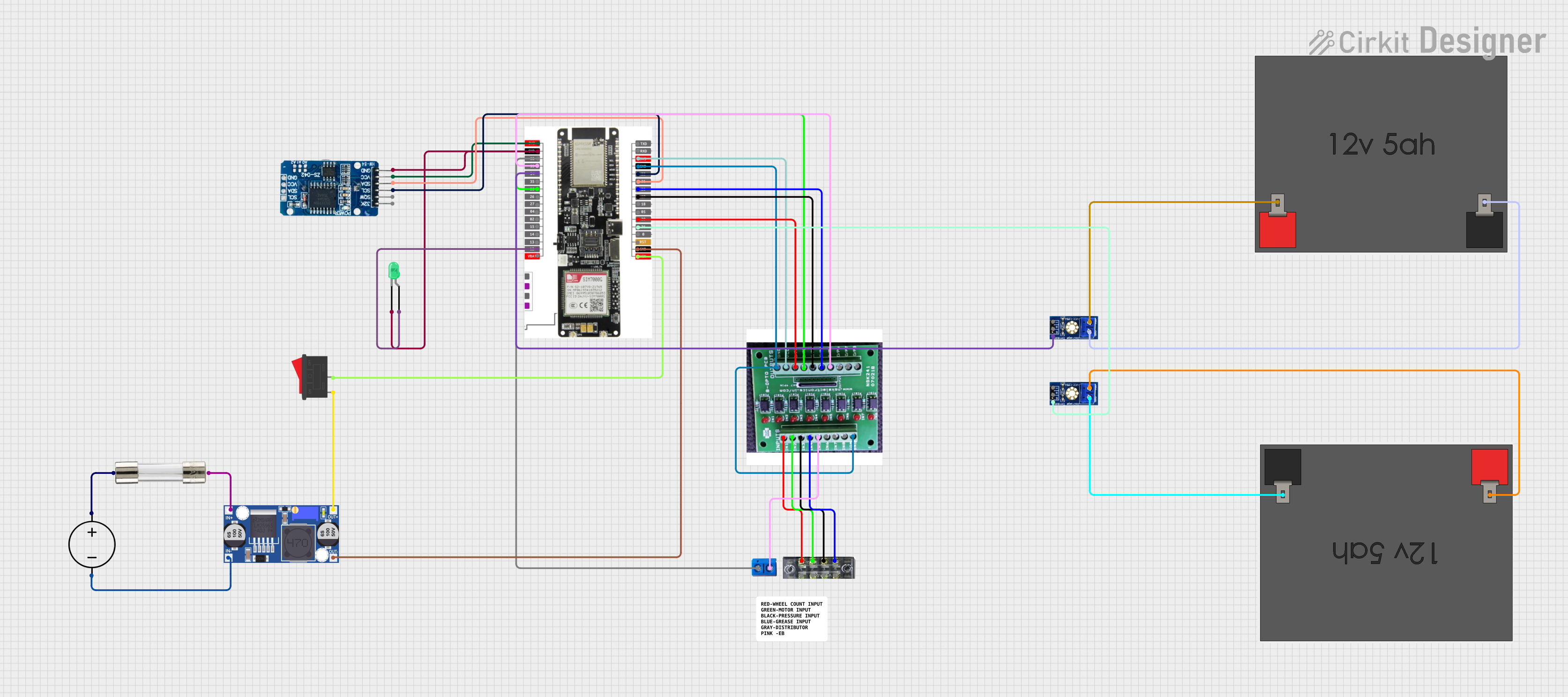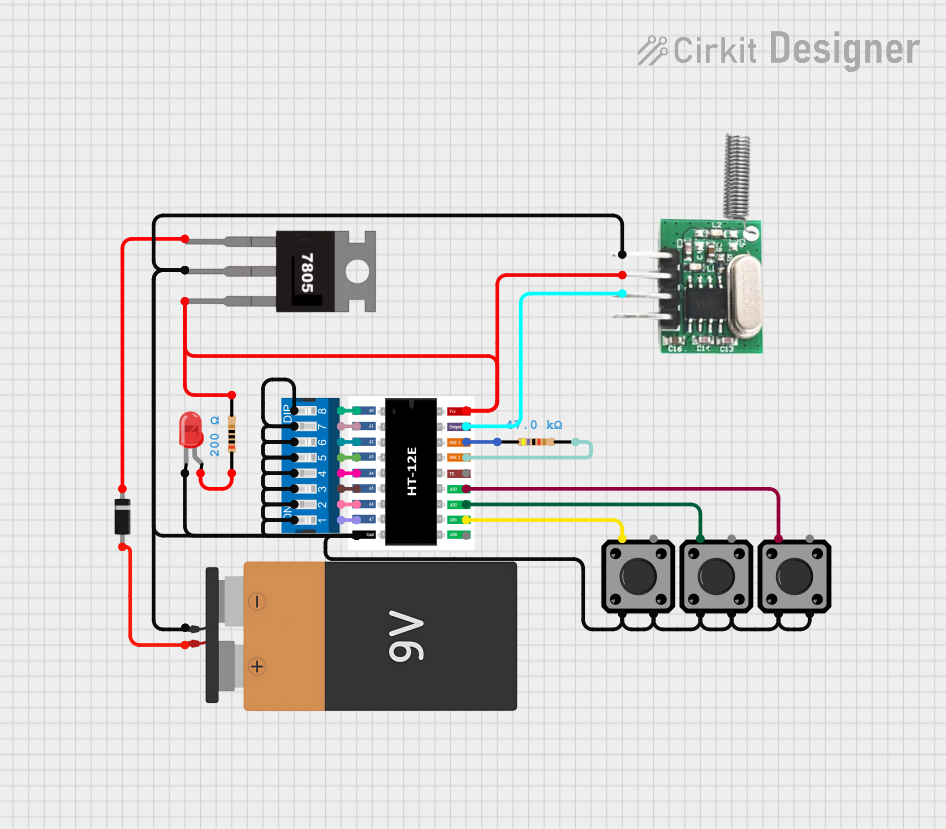
How to Use TCA9548 8-Way: Examples, Pinouts, and Specs

 Design with TCA9548 8-Way in Cirkit Designer
Design with TCA9548 8-Way in Cirkit DesignerIntroduction
The TCA9548 is an 8-channel I2C multiplexer designed to simplify communication between a master device and multiple I2C devices. It allows the master to select one of eight downstream channels, enabling seamless management of multiple I2C devices on a single bus. This is particularly useful in applications where devices share the same I2C address, as the TCA9548 eliminates address conflicts by isolating each device on its own channel.
Explore Projects Built with TCA9548 8-Way

 Open Project in Cirkit Designer
Open Project in Cirkit Designer
 Open Project in Cirkit Designer
Open Project in Cirkit Designer
 Open Project in Cirkit Designer
Open Project in Cirkit Designer
 Open Project in Cirkit Designer
Open Project in Cirkit DesignerExplore Projects Built with TCA9548 8-Way

 Open Project in Cirkit Designer
Open Project in Cirkit Designer
 Open Project in Cirkit Designer
Open Project in Cirkit Designer
 Open Project in Cirkit Designer
Open Project in Cirkit Designer
 Open Project in Cirkit Designer
Open Project in Cirkit DesignerCommon Applications and Use Cases
- Managing multiple I2C devices with identical addresses
- Expanding the number of I2C devices on a single bus
- Sensor arrays in robotics and industrial automation
- Multi-display systems
- Data acquisition systems
Technical Specifications
Key Technical Details
- Operating Voltage (Vcc): 1.65V to 5.5V
- I2C Bus Voltage Range: 1.65V to 5.5V
- Maximum Clock Frequency: 400 kHz (I2C Fast Mode)
- Number of Channels: 8
- I2C Address Range: 0x70 to 0x77 (configurable via address pins)
- Low Standby Current: 1 µA (typical)
- Operating Temperature Range: -40°C to 85°C
- Package Type: TSSOP-16 or similar
Pin Configuration and Descriptions
| Pin | Name | Description |
|---|---|---|
| 1 | A0 | Address selection pin (LSB). Connect to GND or Vcc to set I2C address. |
| 2 | A1 | Address selection pin. Connect to GND or Vcc to set I2C address. |
| 3 | A2 | Address selection pin (MSB). Connect to GND or Vcc to set I2C address. |
| 4 | Vcc | Power supply input (1.65V to 5.5V). |
| 5 | SDA | I2C data line (master side). |
| 6 | SCL | I2C clock line (master side). |
| 7 | RESET | Active-low reset input. Pull low to reset the device. |
| 8 | GND | Ground. |
| 9-16 | SD0-SD7 | I2C data lines for channels 0 to 7 (downstream devices). |
Usage Instructions
How to Use the TCA9548 in a Circuit
- Power the Device: Connect the Vcc pin to a power supply (1.65V to 5.5V) and the GND pin to ground.
- Set the I2C Address: Configure the A0, A1, and A2 pins to set the desired I2C address (0x70 to 0x77).
- For example, connecting all address pins to GND sets the address to 0x70.
- Connect the I2C Bus: Attach the SDA and SCL lines from the master device to the corresponding pins on the TCA9548.
- Connect Downstream Devices: Attach the SDA and SCL lines of each downstream I2C device to one of the SD0-SD7 channels.
- Control the Multiplexer: Use the master device to send commands to the TCA9548, selecting the desired channel for communication.
Important Considerations and Best Practices
- Pull-Up Resistors: Ensure proper pull-up resistors are present on the SDA and SCL lines. Typically, 4.7kΩ resistors are used.
- Channel Isolation: Only one channel can be active at a time. Ensure the correct channel is selected before communicating with a device.
- Reset Pin: If unused, connect the RESET pin to Vcc to prevent accidental resets.
- Voltage Compatibility: Ensure the voltage levels of the I2C bus and the TCA9548 are compatible with the connected devices.
Example Code for Arduino UNO
Below is an example of how to use the TCA9548 with an Arduino UNO to select a channel and communicate with a device.
#include <Wire.h> // Include the Wire library for I2C communication
#define TCA9548_ADDRESS 0x70 // Default I2C address of the TCA9548
// Function to select a specific channel on the TCA9548
void selectChannel(uint8_t channel) {
if (channel > 7) return; // Ensure the channel is within range (0-7)
Wire.beginTransmission(TCA9548_ADDRESS);
Wire.write(1 << channel); // Send the channel selection command
Wire.endTransmission();
}
void setup() {
Wire.begin(); // Initialize I2C communication
Serial.begin(9600); // Initialize serial communication for debugging
// Example: Select channel 2
selectChannel(2);
Serial.println("Channel 2 selected.");
}
void loop() {
// Example: Communicate with a device on channel 2
Wire.beginTransmission(0x40); // Replace 0x40 with the I2C address of your device
Wire.write(0x00); // Example command to the device
Wire.endTransmission();
delay(1000); // Wait for 1 second before repeating
}
Troubleshooting and FAQs
Common Issues and Solutions
No Communication with Downstream Devices:
- Cause: Incorrect channel selection.
- Solution: Verify that the correct channel is selected using the
selectChannel()function.
I2C Address Conflict:
- Cause: Multiple TCA9548 devices with the same address.
- Solution: Configure the A0, A1, and A2 pins to set unique addresses for each TCA9548.
Devices Not Responding:
- Cause: Missing or incorrect pull-up resistors on the SDA and SCL lines.
- Solution: Ensure proper pull-up resistors (e.g., 4.7kΩ) are connected.
Device Resets Unexpectedly:
- Cause: Floating RESET pin.
- Solution: Connect the RESET pin to Vcc if not used.
FAQs
Q: Can I activate multiple channels simultaneously?
A: No, the TCA9548 allows only one channel to be active at a time.Q: What happens if no channel is selected?
A: The TCA9548 will not forward any I2C communication to downstream devices.Q: Can the TCA9548 work with 3.3V and 5V devices on the same bus?
A: Yes, but ensure proper level shifting or voltage compatibility between devices.Q: How do I reset the TCA9548?
A: Pull the RESET pin low momentarily or power cycle the device.